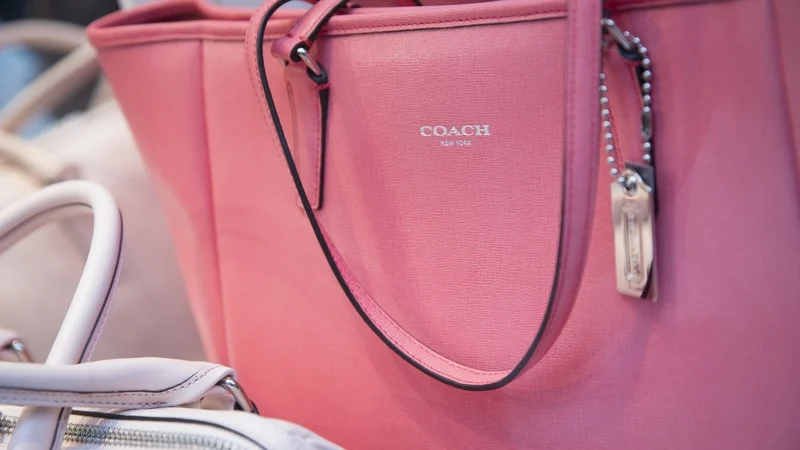October 25, 2024
In a surprising turn of events, Capri Holdings, the parent company of high-profile fashion brands such as Michael Kors, Jimmy Choo, and Versace, saw its shares fall by a staggering 46% after a U.S. court decision halted its proposed $8.5 billion merger with luxury fashion conglomerate Tapestry, Inc. Tapestry is best known for owning popular brands like Coach, Kate Spade, and Stuart Weitzman. The ruling marks a significant shift in the luxury retail sector, where consolidation has been a popular strategy for growth and stability amid evolving consumer trends and increasing market competition.
Background on the Blocked Merger
Capri and Tapestry first announced their merger plan in August 2023, intending to create an American luxury powerhouse to rival European giants like LVMH and Kering. The two companies envisioned a merger that would create one of the largest luxury conglomerates in the U.S., with a combined portfolio of brands that would appeal to diverse consumer tastes, from accessible luxury to high-end fashion.
The deal, valued at $8.5 billion, aimed to leverage each brand’s unique strengths and allow shared resources in areas like e-commerce, supply chain management, and customer insights. By consolidating these resources, Capri and Tapestry hoped to compete more effectively on a global scale, especially as European luxury brands dominate high-end markets across Asia and the Middle East.
Key Factors Leading to the Court’s Decision
The U.S. court’s decision to block the merger stems from multiple concerns raised by regulatory bodies, including antitrust issues and fears that the merger could harm market competition. The Federal Trade Commission (FTC) had expressed apprehension over how the consolidation of Capri and Tapestry could limit consumer choice in certain segments of the fashion industry, especially where the companies’ brands overlap in target demographics.
While Tapestry’s portfolio leans toward affordable luxury, Capri’s brand offerings also overlap in this category, creating potential antitrust concerns. Market regulators argued that a merger could allow the combined entity to wield excessive control over prices, consumer data, and retail presence, especially in the U.S. market. Tapestry and Capri had offered concessions, such as divestments or restructuring, but these were ultimately deemed insufficient to address competitive concerns fully.
The court also weighed the potential for reduced competition for designer products and concerns over supply chain and sourcing practices. Analysts noted that this ruling reflects increased scrutiny of mergers in the luxury sector, with regulators aiming to prevent large conglomerates from reducing competitive diversity, especially among domestic and international players.
Immediate Impact on Capri Holdings and Shareholders
Following the court’s ruling, Capri Holdings experienced a 46% drop in its stock price, reflecting investor disappointment and uncertainty about the company’s future growth strategy. Capri’s share value had previously risen in anticipation of the merger’s completion, but this drop wiped out a significant portion of recent gains.
The blocked merger leaves Capri at a critical juncture. The company now faces heightened pressure to independently bolster its financial stability and brand presence amid intensifying market competition. Capri’s flagship brand, Michael Kors, has been experiencing challenges with changing consumer preferences and increased competition from online and luxury European brands. Likewise, while Versace and Jimmy Choo are respected luxury brands, they too face pressure to maintain relevance and appeal in a market that’s increasingly oriented towards e-commerce and digital shopping experiences.
For Tapestry, the ruling brings potential setbacks as well, though the company’s stock decline was more modest at around 15%. Tapestry had anticipated the merger would enhance its financial flexibility and boost its ability to compete against luxury conglomerates with more extensive resources and geographic reach. The court’s decision means Tapestry must also reconsider its growth strategy and may look at alternative acquisition targets or restructuring options.
Broader Implications for the U.S. Luxury Sector
The blocked merger sends a clear message to the luxury fashion industry: consolidation in the U.S. market will face rigorous scrutiny, particularly when it involves major players with overlapping consumer demographics. U.S. regulators appear increasingly cautious of mergers that could stifle competition, control pricing, or reduce consumer choice, particularly in sectors where European conglomerates have traditionally led.
Luxury retailers have been under growing pressure to evolve as digital transformation reshapes shopping behavior, and the recent challenges posed by inflation and fluctuating consumer spending patterns have further underscored the need for agile and innovative approaches to remain competitive. For U.S.-based brands, mergers and acquisitions have been one way to diversify offerings, enhance supply chains, and compete on a global scale. However, the court’s ruling suggests that the path toward consolidation may not be as straightforward as anticipated.
The luxury fashion landscape is also seeing increased interest in sustainability, social responsibility, and ethical production practices. A merger between two giants could, in theory, enhance capabilities in these areas, but there is also concern that excessive consolidation could discourage brands from making individual investments in these priorities.
What Lies Ahead for Capri and Tapestry?
With the merger blocked, both Capri and Tapestry must reconsider their immediate strategic plans. For Capri, the priority may now be on stabilizing its core brands and refocusing on innovation, digital marketing, and reaching younger consumer segments. The company may also explore strategic partnerships, digital transformation efforts, or smaller acquisitions that do not trigger regulatory concerns.
Tapestry, while still in a relatively strong financial position, may also need to revise its strategy. Analysts believe Tapestry could consider other acquisition targets or invest in its existing brands to build consumer loyalty and expand its international presence. Tapestry has previously focused on accessible luxury, and a renewed focus on brand differentiation and customer experience may be necessary to stand out in a highly competitive market.
A Possible Resurgence of Smaller, Niche Brands
The court’s decision to block this high-profile merger may open doors for smaller, niche brands in the U.S. luxury market. As regulators push back against large-scale consolidations, smaller brands have an opportunity to carve out unique market positions by emphasizing individuality, sustainability, and specialized craftsmanship. This trend has already gained momentum in recent years, as consumers increasingly seek personalized, unique fashion experiences.
The regulatory decision against Capri and Tapestry could prompt investors to look beyond mega-mergers and consider funding innovative, niche brands that appeal to modern consumers’ values and expectations. Additionally, it highlights the U.S. government’s intention to protect competitive diversity within domestic markets, encouraging industry players to focus on organic growth and brand differentiation over consolidation.
Final Thoughts
The U.S. court’s decision to block the Capri-Tapestry merger reflects the growing scrutiny of consolidation in the luxury retail space and highlights regulators’ commitment to maintaining market diversity. Both Capri and Tapestry now face the challenge of navigating a competitive and changing market independently, with a renewed focus on brand differentiation, consumer engagement, and adaptability.
This ruling will likely shape future industry strategies, encouraging luxury brands to innovate and adapt independently rather than relying solely on mergers for growth. As both companies work to regain investor confidence, the luxury retail sector will be closely watching to see how this decision influences the evolution of American fashion brands in the global market.





